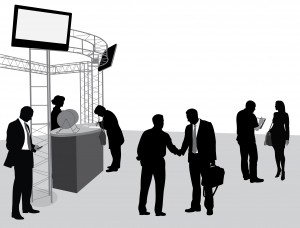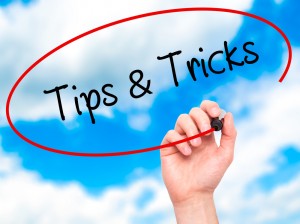In our previous post, we discussed how it would be easy for unprepared booth staff to become overwhelmed by the crowds and by the presence of so many competitors vying for attendee attention. Booth staff training is essential. Exhibitor Magazine outlined the four key parts of a successful booth training program: 1) review of marketing strategy, exhibiting goals, and products; 2) booth staff behavior and etiquette; 3) in-booth exhibit orientation; and 4) housekeeping details.
In the first part of the training, the management team will review of the marketing strategy and highlight management’s commitment to and support of the trade show program. Additionally, measurable corporate objectives and individual staff goals should be clearly understood by everyone on the exhibit team. This is also a good time to dole out show roles, such as booth captain, press/media liaison, technical staff for demos, competitive-intelligence gatherer, conference-session attendee, etc.
During this portion of training it is important to review show information, especially whatever data is available around the attendee profile and anticipated total number of attendees. Also share the names of VIP customers and/or prospects that might visit the exhibit during the show, as well as the appropriate action for staffers to take. For example, should booth staffers direct VIP clients to a specific sales rep or company contact? Other items to review include any exhibit/show themes, pre-, at-, and post-show promotions, key corporate messages (takeaways) to deliver to all visitors, and frequently asked attendee questions from previous shows along with their preferred answers.
Finally, review the products being shown in the exhibit and share printed product overviews including benefits for each target audience, features, applications, specifications, availability, pricing and show specials, and competitive product reviews (models, features, benefits, and costs).
In our next post, we will discuss the basics of booth staff etiquette and how to train and equip booth staff for maximum effectiveness on the trade show floor.
Need help preparing for an upcoming show, contact us for a custom consultation.





